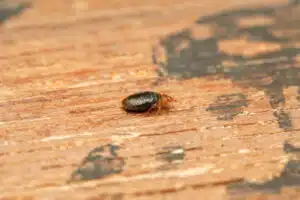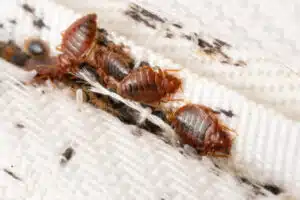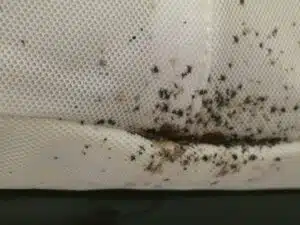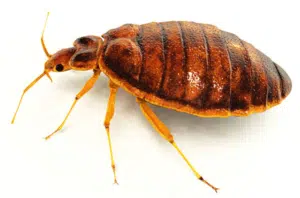Safeguarding Your Salt Lake Home During Winter: Pest Prevention Tips
As the temperatures drop and winter approaches in Salt Lake City, residents take to bundling up and enjoying their homes’ warmth and coziness. Unfortunately, humans aren’t the only ones seeking refuge from the cold. Various pests, such as rodents, spiders, and insects, also search for shelter during the colder months, and your house may be the perfect hiding place for them. By understanding the common winter pests in Salt Lake City and adopting effective prevention techniques, you can safeguard your home against these unwelcome intruders and maintain a comfortable, pest-free living environment throughout the winter season.
In this blog post, we will explore the most prevalent winter pests in Salt Lake City, including mice, rats, spiders, and other cold-weather invaders. We will delve into strategies for preventing these pests from entering your home, and what to do if you suspect their presence. By remaining vigilant and informed about the potential threats posed by winter pests, you can ensure that your home remains a sanctuary during the frigid months, offering respite and comfort to you and your loved ones without the added stress of uninvited pests.
Winter pest-proofing your Salt Lake City home may seem like a daunting task, but with the right knowledge and dedication to prevention, you can secure your domain against cold-weather intruders. By fostering a safe and pest-free living environment, you set the scene for cozy nights by the fire, festive gatherings, and priceless winter memories, all without being plagued by the worry of unwanted pests. So let’s dive into the world of Salt Lake City’s winter pests, arming ourselves with the knowledge to maintain a warm, welcoming home all season long.
1. Rodents: Unwelcome Winter House Guests in Salt Lake City
Mice and rats are common winter pests in Salt Lake City, seeking shelter and sustenance in the warmth of homes as the temperatures drop.
Preventing Rodent Infestations:
– Seal gaps and cracks: Inspect your home’s exterior for gaps and cracks that may allow rodents to enter, paying close attention to areas around pipes, vents, windows, and doors. Seal these openings with caulk, expandable foam, or other appropriate materials.
– Remove food sources: Keep your kitchen clean, store food in sealed containers, and avoid leaving pet food out overnight. Dispose of garbage in sealed, rodent-proof containers.
– Eliminate nesting areas: Clear your yard and property of debris and clutter, maintain landscaping, and store firewood at least 20 feet away from your home.
2. Spiders: Eight-Legged Winter Trespassers
Spiders are frequent cold-weather intruders in Salt Lake City homes, searching for warmth and sustenance in the form of other insects.
Preventing Spider Infestations:
– Keep your home clean: Regularly vacuum and dust your home, focusing on corners, baseboards, and other hiding spots, to remove webs, spiders, and potential prey.
– Seal entry points: Inspect your home’s exterior for any gaps or cracks that spiders could use to enter and seal them accordingly.
– Manage outdoor lighting: Replace outdoor lights with yellow “bug lights” or sodium vapor lamps, which attract fewer insects and, as a result, less spiders seeking prey.
3. Boxelder Bugs: Black and Red Hitchhikers on a Winter Journey
Boxelder bugs, easily recognized by their black and red coloration, often find their way into Salt Lake City homes in search of warmth during the winter months.
Preventing Boxelder Bug Infestations:
– Seal entry points: Inspect your home for cracks or gaps around windows, doors, siding, or other potential entry points. Use caulk, weatherstripping, or expanding foam to seal these areas.
– Remove boxelder trees: If possible, consider removing female boxelder trees from your property, as they produce the seed pods that attract these pests.
– Exterior treatments: Apply an appropriately labeled insecticide to your home’s exterior during the early fall, focusing on common entry points and areas where boxelder bugs congregate to deter and prevent infestations.
4. Overwintering Pests: Uninvited Hibernators in Your Home
Many other pests, such as ladybugs, stink bugs, and cluster flies, seek shelter in Salt Lake City homes to overwinter, reemerging when the temperatures begin to rise.
Preventing Overwintering Pest Infestations:
– Seal potential entry points: Inspect your home’s exterior for any gaps, cracks, or openings that overwintering pests could exploit. Use caulk, weatherstripping, or expandable foam to seal these areas.
– Proper ventilation: Maintain adequate ventilation in attics, basements, and crawl spaces to discourage overwintering pests from seeking shelter in these areas.
– Exterior pest control: Apply a preventative insecticide treatment to your home’s exterior in the late summer or early fall, targeting common entry points and nesting areas.
Conclusion
By staying vigilant and adopting effective pest prevention techniques, you can ensure that your Salt Lake City home remains a comfortable, pest-free haven throughout the winter season. By understanding the threats posed by rodents, spiders, and other cold-weather invaders, you can tackle potential problems head-on and keep your home and family safe from these unwelcome intruders.
As you prepare your home for the colder months, remember that safeguarding against winter pests is an essential aspect of maintaining a warm, hospitable living environment. By taking the necessary precautions and being proactive in your pest control and prevention efforts, you can create a space that not only keeps the chill at bay but also ensures your wintertime memories are filled with joy, love, and laughter – undisturbed by the presence of pesky cold-weather pests. Contact Salt Lake City Pest Control today!
Related Articles

Tick vs. Bed Bugs: Differences and Similarities
Understanding the differences between two common blood-sucking pests, ticks and bed bugs, is important. We want to make sure you know exactly what kind of pests you’re dealing with,

Where Do Bed Bugs Come From, and How to Prevent Them? A Guide for Salt Lake Residents
Bed bugs can be a major nuisance and cause various physical and emotional problems, including skin irritation, anxiety, and sleep disturbances. In Salt Lake City, bed bugs are a growing concern, especially in apartment buildings, hotels, and other high-density living spaces. But where do bed bugs come from, and how can you prevent them from infesting your home or property?

Are All the Tiny Black Bugs in My Bed Bed Bugs?
Sleeping is one of the things that we look forward to after a very long day. We recharge ourselves by sleeping by the end of the night to be refreshed the next day. But we can be disturbed even during our sleep by pesky pests crawling and hiding where we sleep. That’s terrifying, right? Pests that are known to annoy us during our sleep are bed bugs. They are usually found where humans and other pets sleep. Bed bugs can be almost anywhere in the world – even in your Saltlake home! They can be annoying because they suck your blood and leave you with an itch and bumps in the infected area. So blood attracts them, even the blood of other animals. Therefore, you should conduct bed bug removal if you have them. If you find bugs on your beds, you might think they are bed bugs. But are they?

Can Bed Bugs Live in Your Car?
Bed bugs are small, flat, and oval-shaped insects that feed on the blood of humans and animals. During the day, bed bugs hide in cracks and crevices around beds, furniture, and baseboards. You can also find them in mattresses, bed frames, blankets, carpets, and other fabric items throughout your home. While it is possible for bed bugs to infest your car, they’re less likely to do so than inside a house or other structure.

How to Find Bed Bugs in Your Home
Bed bugs are small, blood-sucking that feed on human and animal blood. They belong to the family Cimicidae, contain over 100 species, and have been around for millions of years.

Can Bed Bugs Jump?
Bed bugs are a common household pest that can be difficult to get rid of. These tiny insects can live in any crevice or crack in your home and feed on blood.
